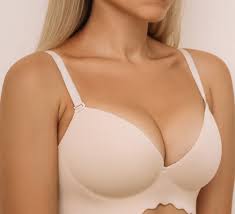Breast augmentation has evolved significantly over the years, offering various techniques tailored to individual preferences and body types. Understanding the different methods available can help prospective patients make an informed decision based on their aesthetic goals. Here, we explore three popular breast augmentation techniques: saline implants, silicone implants, and fat transfer.
Saline Implants:
Saline implants, filled with sterile saltwater, are one of the most common choices for Breast Augmentation in Dubai (تكبير الثدي في دبي). They are known for their safety as the saline solution is naturally absorbed by the body in case of a rupture. This technique offers a firmer texture compared to other options and can be adjusted during surgery to match the desired size. The insertion procedure is minimally invasive, usually involving small incisions in less conspicuous areas. However, some patients report a less natural feel compared to silicone implants, which might affect their preference depending on the desired outcome.\

Silicone Implants:
Silicone implants, filled with a gel that closely mimics the natural breast tissue, provide a more realistic feel and look. They are an excellent choice for those seeking a softer breast appearance. The silicone material also maintains its shape better over time, reducing the likelihood of wrinkling or rippling. While they require slightly larger incisions compared to saline implants, the aesthetic benefits are often worth it for many patients. On the downside, silicone implants may require more regular monitoring through MRI scans to ensure integrity, which could be an added consideration for some individuals.
Fat Transfer:
Fat transfer, also known as autologous fat grafting, involves using the patient’s own fat cells to augment the breasts. This technique is less invasive compared to implant-based methods since it involves liposuction from areas like the abdomen, thighs, or buttocks. The natural material used means there is no risk of rejection, and the results tend to have a more natural look and feel. However, the volume of fat that can be transferred is limited, so not everyone may achieve the desired size. Additionally, multiple sessions may be required to reach the desired volume, which could extend the recovery time.
Hybrid Techniques:
A hybrid approach combines fat transfer with implants, aiming to leverage the benefits of both methods. This technique can offer the natural feel of fat transfer along with the additional volume provided by implants. It may be an ideal choice for those who want both the natural look of fat grafting and the enhanced size from implants. However, it is important to consider that hybrid techniques might come with higher costs and a more extended recovery period due to the dual procedure.
Risks and Complications:
As with any surgical procedure, breast augmentation carries some risks, including infection, changes in nipple sensation, and scarring. The specific risks associated with each technique vary. For instance, silicone implants might require additional monitoring, while fat transfer may involve the risk of fat absorption. Understanding these potential complications is essential for making a well-rounded decision.
Personal Preferences:
Ultimately, the choice of breast augmentation technique depends on individual preferences, body type, and lifestyle. While saline implants offer safety and adjustability, silicone implants deliver a more realistic feel. Fat transfer provides a natural outcome but with limitations in volume. Patients should consult with a qualified professional to weigh the benefits and drawbacks of each method and choose the one that best aligns with their aesthetic goals.
Conclusion:
Each breast augmentation technique comes with its own set of pros and cons, catering to different preferences and body types. Saline and silicone implants are reliable options with established safety profiles, while fat transfer offers a natural alternative. The decision should be based on individual needs, desired outcomes, and a thorough discussion with a medical professional.

